Cultural and historical heritage
Cultural and historical heritage in the Significant landscape Channel-Port
Due to its proximity to the city, the channel is extremely rich in cultural and historical monuments such as churches and chapels, the most interesting of which is the Cave of St Anthony with a church of the same name. The cave was first mentioned in the 13th century and many hermits used to live in it; one of the most prominent among them was Jeronim Detrico, an aristocrat from Zadar, who was buried there in 1615. At the entrance of the St Anthony’s Channel there are visible traces of the two towers between which a chain was stretched in the period between the 14th and 16th centuries; the chain served as the last line of defence at sea and it prevented enemy ships from entering Šibenik Bay.
Amidst the harsh rocks of the channel there is a undersea tunnel with two entrances which was built by the Germans to accomodate warships at the Second World War at the time of the Allied bombings. Inhabitants of Šibenik still call it “Hitler’s eyes” because of its scary appearance.
At the exit of the St Anthony’s Channel, on the island of Ljuljevac, where once was the Benedictine monastery of St Nicholas, we can see the impressive St Nicholas’ Fortress. It was built in the 16th century to protect Šibenik from Turkish naval attacks. The grandeur and size of this fortress were often enough to discourage even the most powerful enemy from trying to enter the city from the sea.
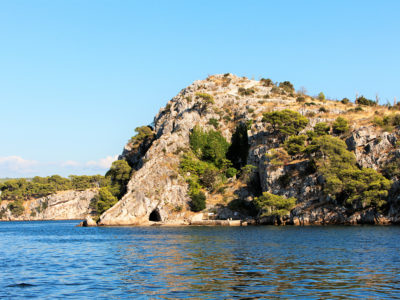 Špilja i crkvica sv. Ante (engl. Cave & Chapel of St Anthony)
Špilja i crkvica sv. Ante (engl. Cave & Chapel of St Anthony)
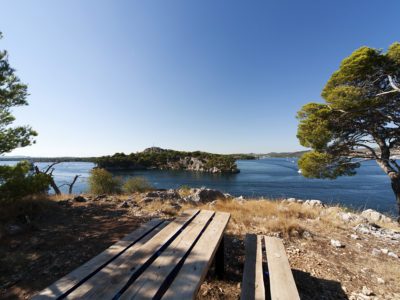 Tragovi dviju kula - Kanal sv. Ante (engl. Traces of two towers - St Anthony's Channel)
Tragovi dviju kula - Kanal sv. Ante (engl. Traces of two towers - St Anthony's Channel)
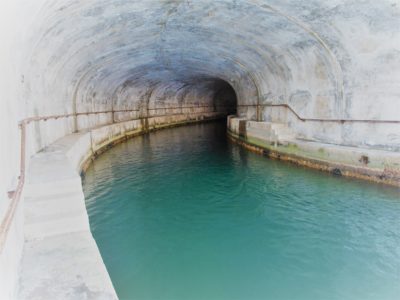 Morski tunel - Kanal sv. Ante (engl. Undersea tunnel – St Anthony's Channel)
Morski tunel - Kanal sv. Ante (engl. Undersea tunnel – St Anthony's Channel)
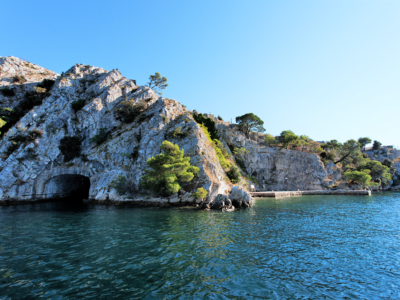 Morski tunel - Kanal sv. Ante (engl. Undersea tunnel – St Anthony's Channel)
Morski tunel - Kanal sv. Ante (engl. Undersea tunnel – St Anthony's Channel)
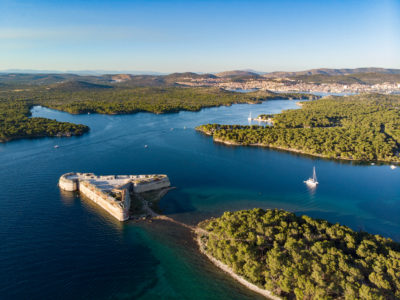 Tvrđava sv. Nikole - Kanal sv. Ante (engl. St Nicholas' Fortress – St Anthony's Channel)
Tvrđava sv. Nikole - Kanal sv. Ante (engl. St Nicholas' Fortress – St Anthony's Channel)
Cultural and historical heritage in the Significant landscape Čikola River and Canyon
One of the most significant cultural and historical monuments is the prehistoric hill fort of Osoje, located 8 km south-west from Drniš, near Pakovo Selo, on the very edge of the canyon. At the beginning of the canyon near Drniš, in the proximity of the road Šibenik-Knin, there is Gradina (Hill Fort) where some archaeological finds from prehistory to the second half of the 19th century have been recovered. In the southern part, preserved segments of a medieval fortress, which belonged to the Nelipić noble family, date back to the 14th century. The present round tower and the north-east defensive wall dates back to the Ottoman times.
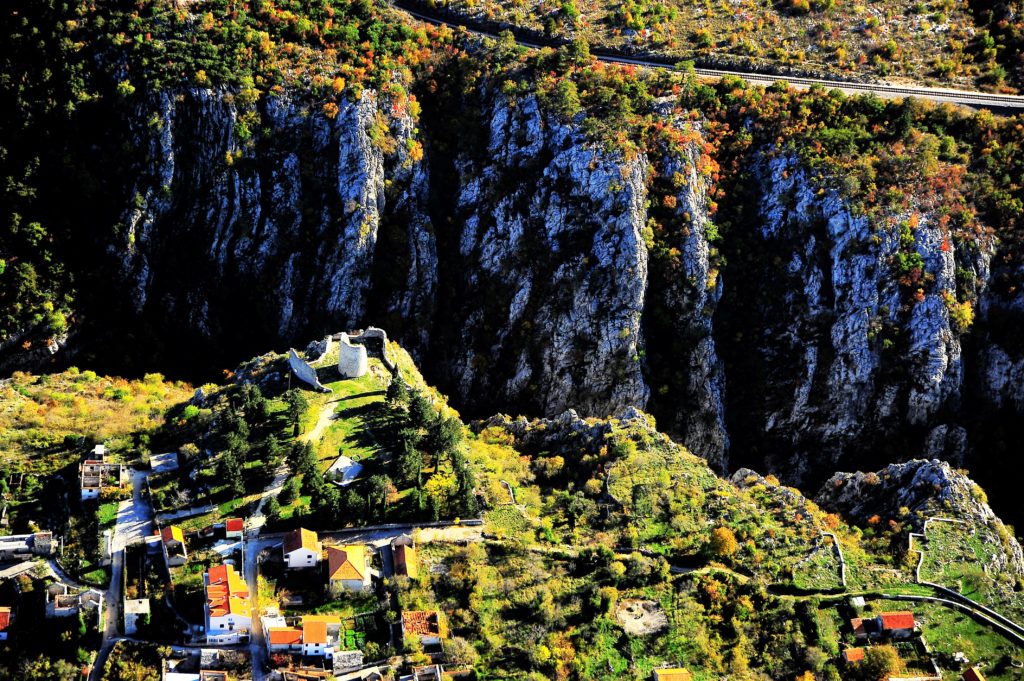 Drniška Gradina (engl. Hill Fort)
Drniška Gradina (engl. Hill Fort)
Cultural and historical heritage in the Significant landscape Žut-Sit Archipelago
The first traces of settlements on the island of Žut date back to Liburnian times, evidence of which is a prehistoric hill fort of Grbe as well as tumuli in Pinizelić and Pod Ražanj position. In Roman times the islands were inhabited exclusively by shepherds. The first written mention of the island is in a list of Zadar islands (11th and 14th centuries) under the name of Žut.
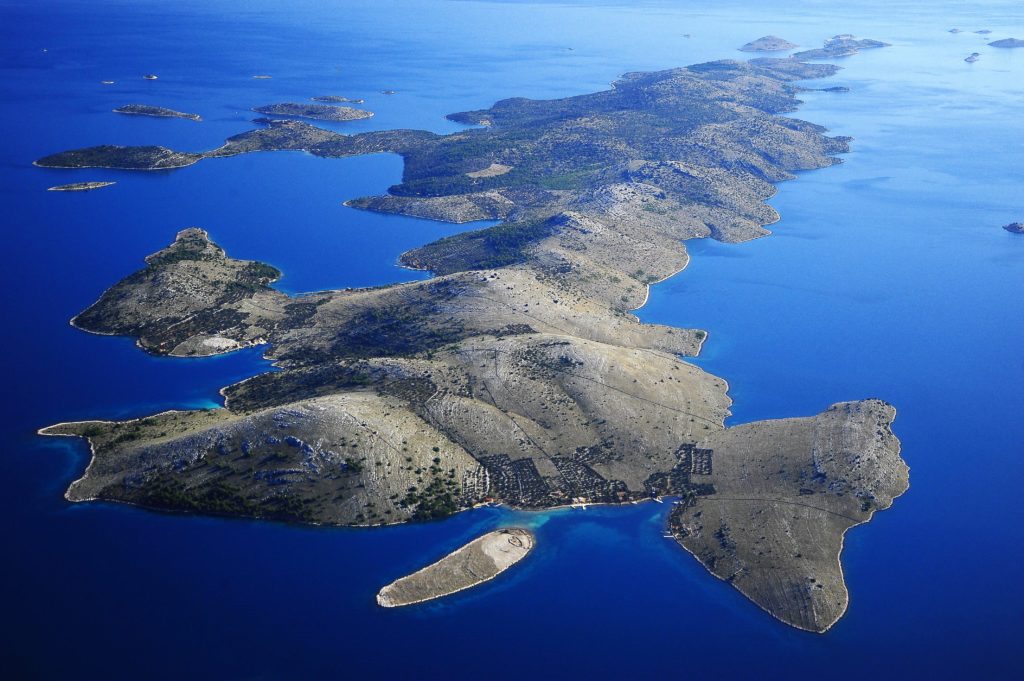 Žutsko-sitska otočna skupina / Pretpovijesna gradina Žut (engl. Žut-Sit Archipelago / Prehistoric hill fort)
Žutsko-sitska otočna skupina / Pretpovijesna gradina Žut (engl. Žut-Sit Archipelago / Prehistoric hill fort)
Cultural and historical heritage in the Significant landscape Gvozdenovo – Kamenar
As far as religious buildings are concerned, in the Significant landscape on Vršine Hill, in Dubrava Parish we can visit the Church of St Michael. It was built in the Romanesque – Gothic style, it was first mentioned in written documents in 1414 and was consecrated in 1944. During the Turkish siege of Šibenik in the 17th century, when the enemy would come closer, guards on the top of Kamenar would lower three branches of a Holm oak tree that were placed high in the air. Thus, troops in St Michael Fortress would get a warning of the approaching threat.
Trumpets would be blown in the city, the gates would be closed and defenders would take up their positions on the wall. In the immediate vicinity of the site there are two of the four fortresses of Šibenik, St John Fortress and Barone/ Šubićevac Fortress, both of which were built in 1647 to protect the city against Turkish invasions.
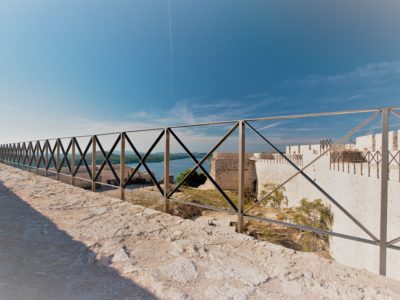 Tvrđava Barone (engl. Barone Fortress)
Tvrđava Barone (engl. Barone Fortress)
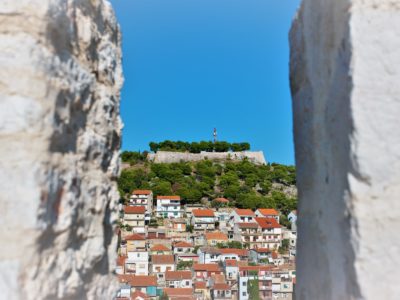 Tvrđava sv. Ivan (engl. St John Fortress)
Tvrđava sv. Ivan (engl. St John Fortress)
Cultural and historical heritage in the Significant landscape Krka River – lower course
In the northern part of the lake, south of the village Prokljan we can see the island of Stipanac, Sustipan or St Stephen, the only island in Prukljan. On the island of Stipanac the remains of the Romanesque Church of St Stephen can be found. In Raslina you can visit the Church of St Michael, which was first mentioned in the 15th century. In the whole area of Prukljan there are numerous traces of ancient settlements, so some stone fragments from the Middle Palaeolithic period and fragments from the Early Neolithic period have been often recovered. This area boasts the remains of the ancient “villae rusticae”, the remains of a Roman aqueduct and the ruins of an Early Christian basilica.
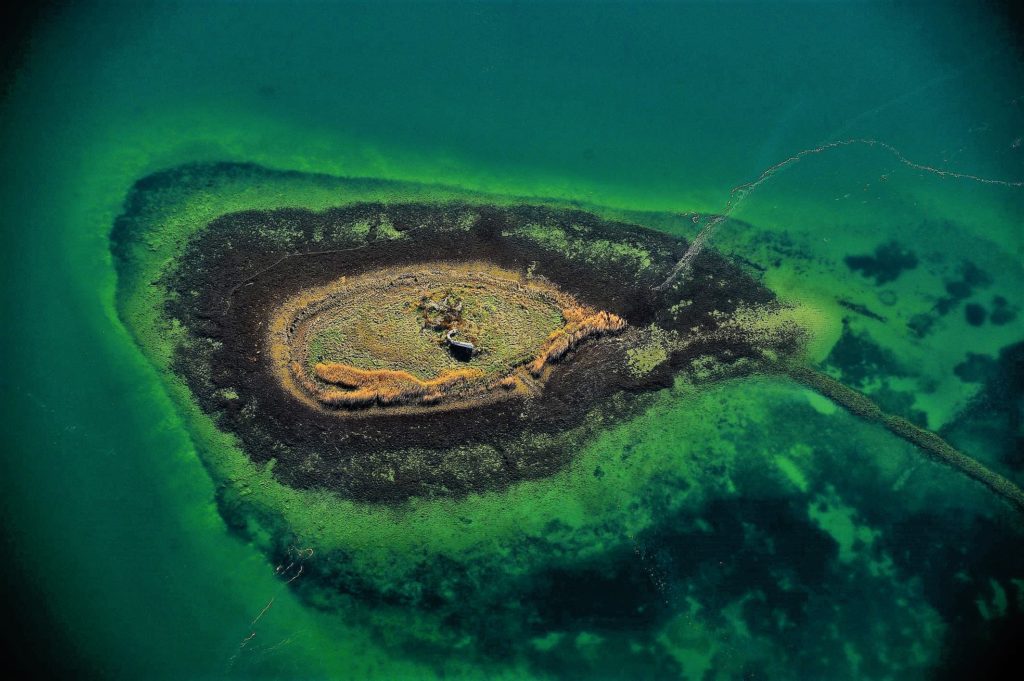 Ostaci crkve sv. Stjepana (engl. Church of St. Stephen)
Ostaci crkve sv. Stjepana (engl. Church of St. Stephen)
Cultural and historical heritage in the Significant landscape Krka River – upper course
The Krka River runs past the hill with a medieval fortress erected in the mid-10th century. This fortress, which is the most important cultural and historical monument of the town of Knin, took on its final shape at the beginning of the 18th century. The fortress is one of the largest fortification structures in Dalmatia and it is divided into the upper, middle and lowertowns, which are connected by drawbridges. The oldest town is the upper town in the northern part of the fortress while the middle and lower towns were constructed in the Late Middle Ages.
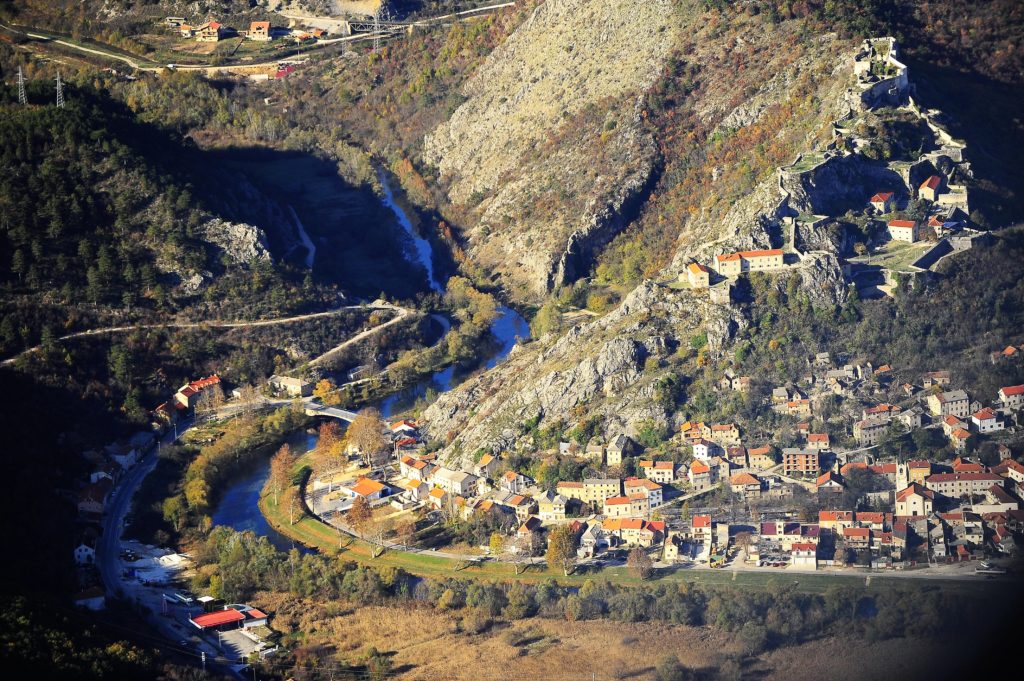 Kninska tvrđava (engl. Fortress of Knin)
Kninska tvrđava (engl. Fortress of Knin)